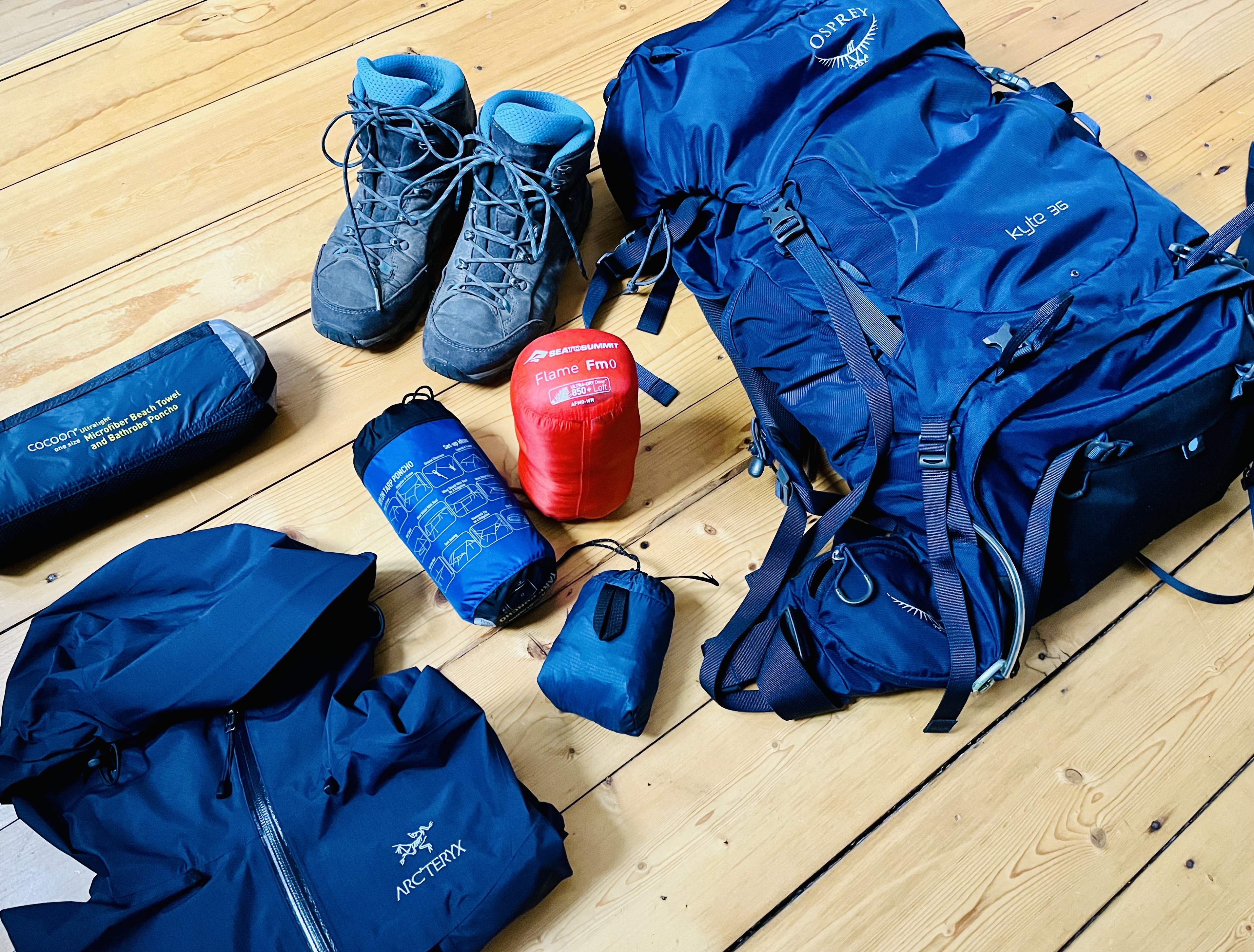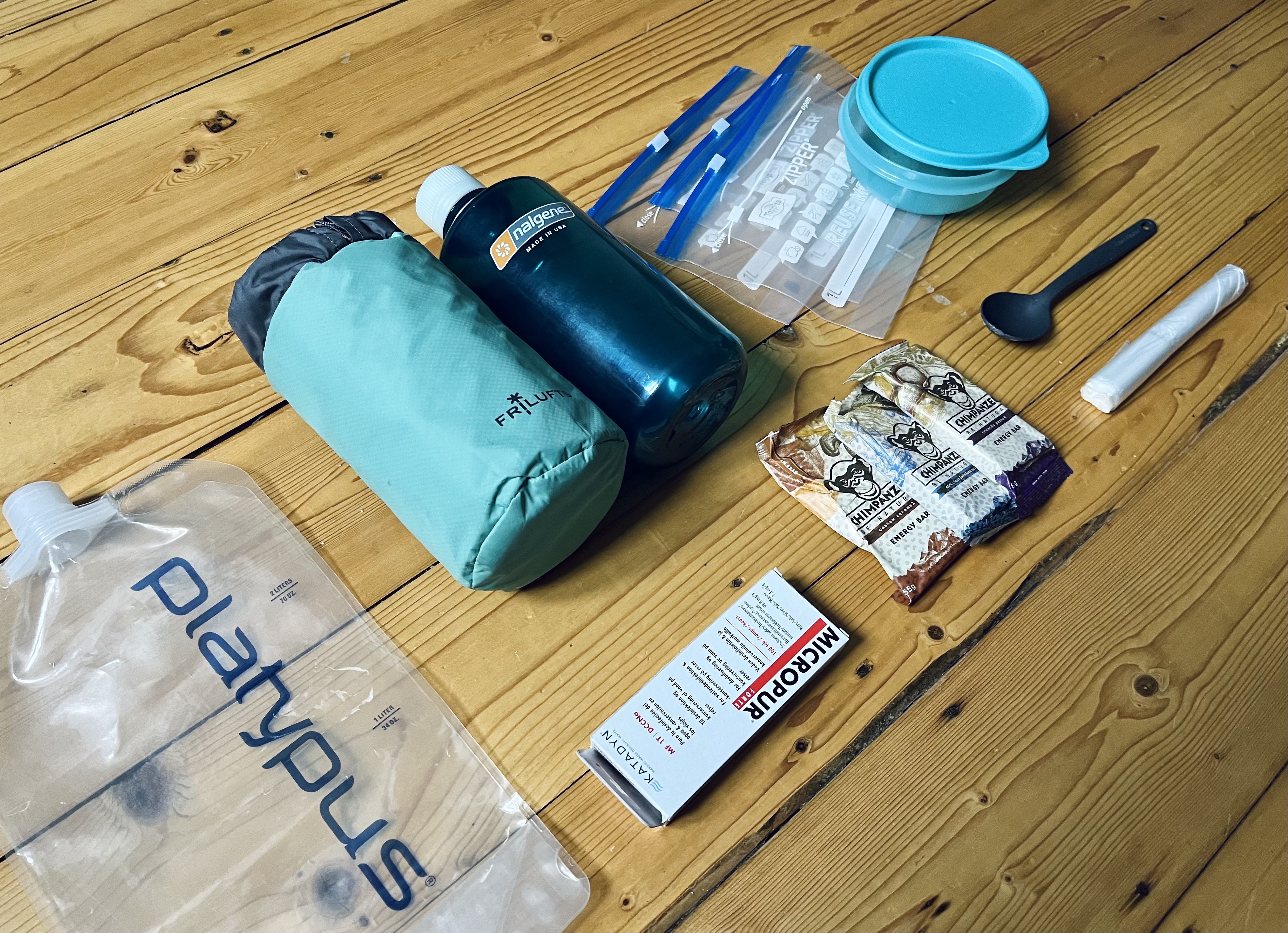To help you with the biggest challenge of hiking a long-distance trail - packing - I consolidated my learnings, tips, and tricks on the main gear you need to take. I did a ton of research on the best high-quality gear and learned a lot about the trade-offs between packing lightly and being prepared for all kinds of challenges along the way. While this list is based on my experience on the Alpe Adria trail, it’s equally applicable to any long-distance trail in Europe (or around the world!). In case you haven’t seen it, check out the entire packing list for the Alpe Adria Trail I put together.
The Most Important Gear You Need to Take on A Long-Distance Trail
Your main gear, especially your backpack and boots, are your most crucial pieces of equipment. These are the ones you really need to get right. So, I‘d recommend rather investing a little more money into these (if you don‘t already own them) and saving on other items. In general, your most essential main gear includes:
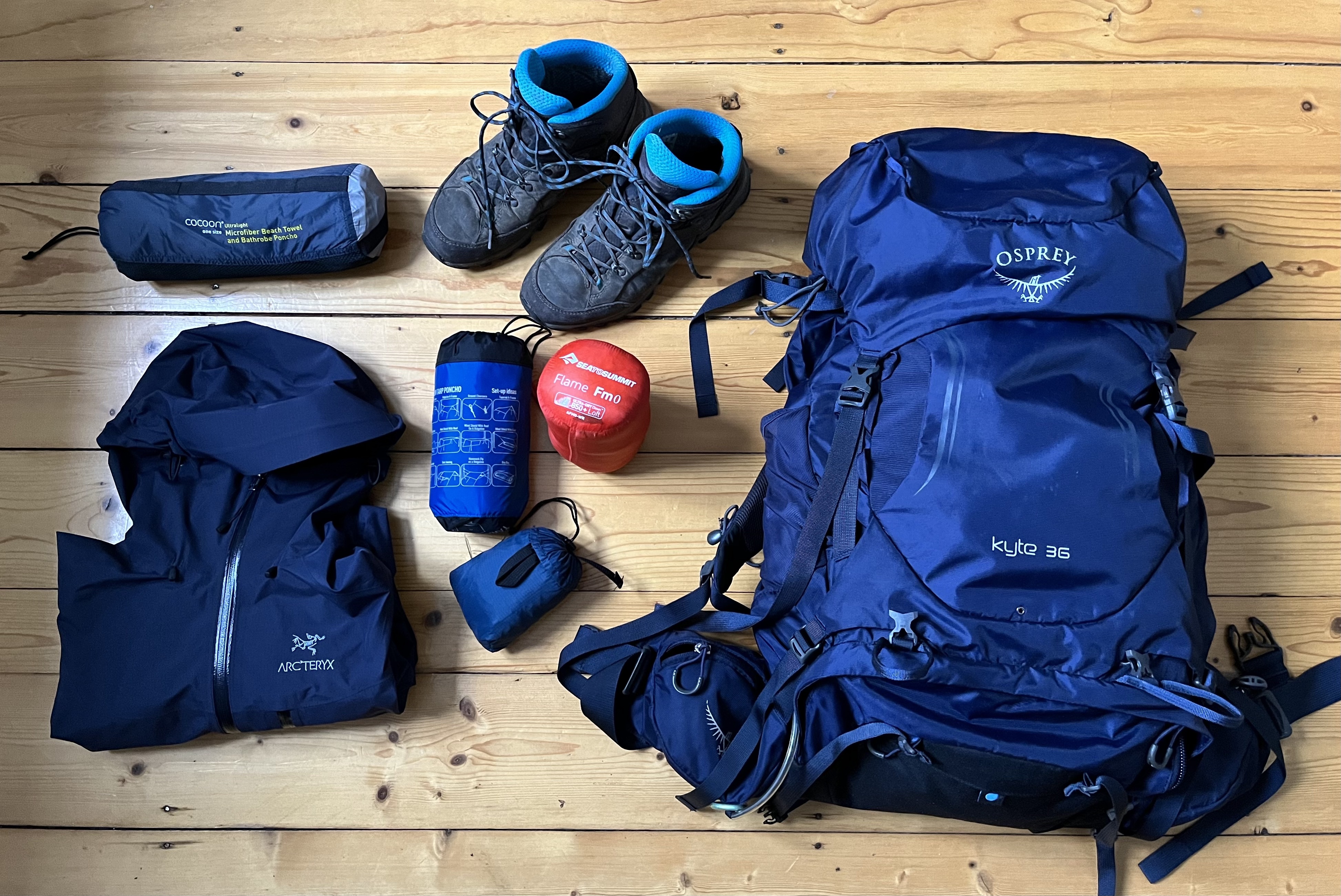
Backpack
For your backpack, it‘s very important that it fits your individual body type, so I‘d recommend going to a specialty store for some professional fitting advice. I have personally made really, really good experiences with the brand Osprey. The quality and functionality of their backpacks are incredible from my point of view. On my backpack, the Osprey Kyte 36, I especially like the top part, which can add 2L of volume. I also love the two pockets on the belt which are perfect for fitting my phone, paper tissues, and some pepper spray if I‘m out alone in the wild.
Hiking Boots
As I mentioned, hiking boots are a crucial piece of equipment. They’re on your feed every single day. For a long-distance trail, I would recommend keeping a close eye on the weight of the shoes, as this is the piece of equipment you need to move most. Which means you‘ll need the most energy moving them around. Many people use trail running shoes nowadays, as they are much lighter than “traditional” hiking boots. I still opted for classic hiking boots that protect and stabilize my ankle. I’ve been using the Hanwag Banks Lady GTX for over 3 years now and I absolutely love them. I’m a fan of the brand as they’ve been around for a long time, value their craft a lot, and are just really good at what they do. I also like the fact that you can get the sole replaced once it’s worn down. For me, hiking boots covering the ankle were a really good decision, as on the Alpe Adria trail there are many stages with a lot of gravel. However, the most important decision factor for hiking botts is that they fit your feet well and you feel comfortable in them. Also, the golden rule is to NOT just buy them, pack them and get onto your 800km long-distance trail. Hiking boots need around 70 - 100km to be broken in properly! So do some practice routes beforehand. And ideally, take your fully packed backpack along as well.
Sleeping bag
I took a thin sleeping bag, which is actually more of a liner, on the Alpe Adria trail because I thought it might be useful for huts or any emergencies. Having hiked the trail, I would not take this again as there really isn‘t any need for it. At least if you‘re opting to stay in the hotels and huts along the route like on my two-week itinerary for the Alpe Adria Trail. If you‘re planning to camp, you‘ll obviously need one - in this case, I‘d opt for a combination of the Sea to Summit Flame 0 (which is the one I took) and Flame 1 or 2, depending on which time of the year you’re hiking. What I like about the Flame series is that they are lightweight and can be combined (e.g. using the Flame 0 liner plus the Flame 1), which will give you a huge range of flexibility on a range of temperatures without adding too much weight. On their website, they give a very detailed overview of the specifics of the whole range (see screenshot below). The Flame series also features a shape tailored to the female body and a short & regular option, which means you don’t need to carry unnecessary weight. Sea to Summit also commits to responsible down standards and doesn’t use PFC treatment for their downs. They are definitely on the pricier side, but well worth the investment.
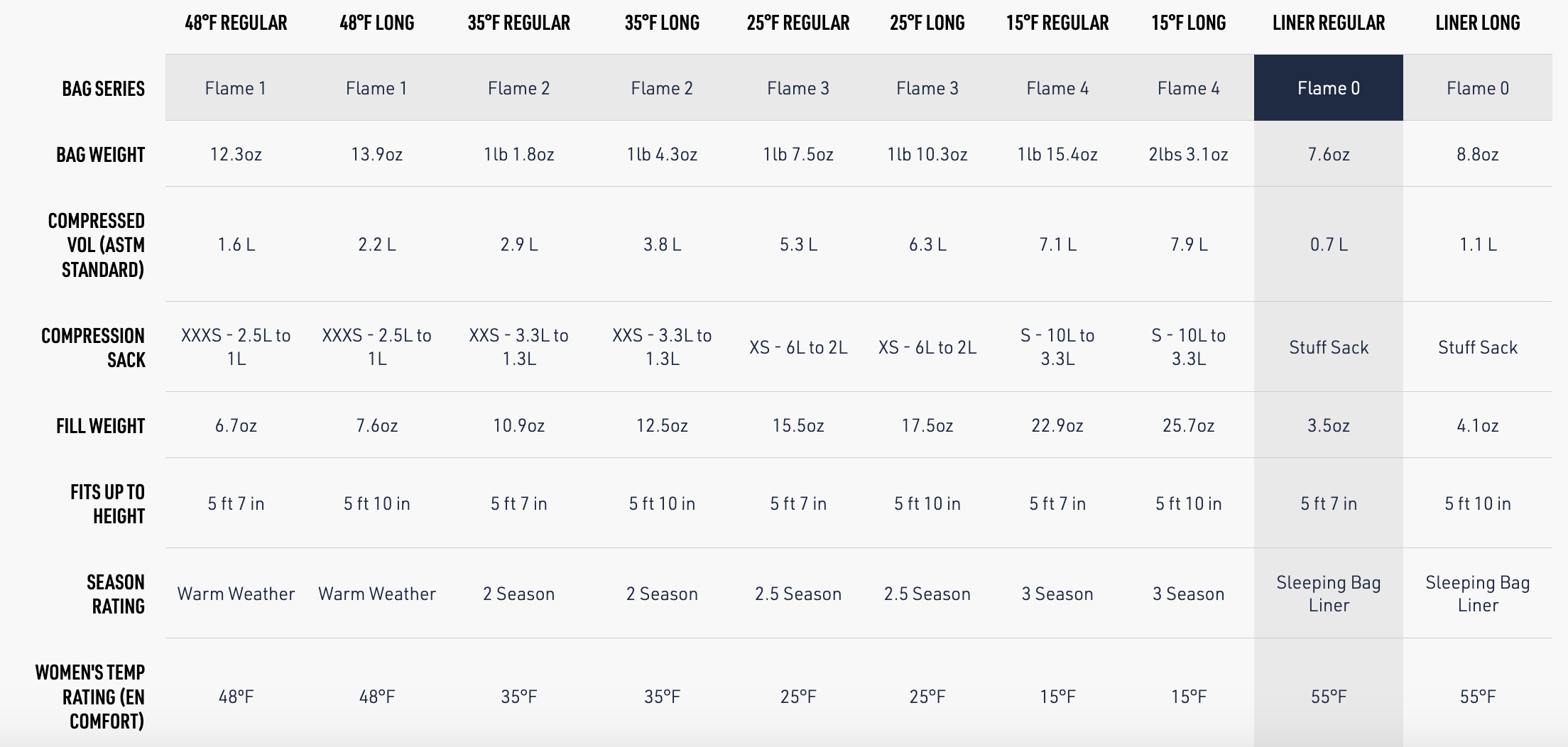
Hiking poles
I would definitely recommend taking hiking polls on any long-distance trail you embark on. It‘s super valuable to take them as they offer a lot of support, especially on steep descents. They are also great for balancing the weight of the backpack. For me, it took a little getting used to but after the first 10km, I didn‘t even notice them anymore. I think there was only one stage along my entire trail where I didn‘t use them and kept them attached to my backpack for the majority of the stage. I can only recommend Leki hiking poles. This is such a mom-thing-to-say, but my mom has actually been using hers for about 20 years (yes, the same ones!) and absolutely loves them. I went into a store to get advice and pick the best ones for me, but it became apparent that Leki is definitely the brand offering the best package on weight, quality, and packability at a still reasonable price. The model I opted for is the Leki Kumbu Lite AS.
Microfibre towel
I took a 2-in-1 poncho microfibre towel when hiking the Alpe Adria trail because I read it‘s super useful for shared shower facilities. It definitely is, however, there weren‘t many shared shower facilities in the accommodation I chose along the trail. And if so, it was shared among so few people, and the facilities were so well set up that it was no problem at all to take my clothes into the shower room with me. So I‘d definitely not take this again and instead just bring a small microfibre towel, saving about 200gr of weight (which is a lot!). The poncho did come in handy on a few occasions, like swimming at a lake, but I’d sacrifice that comfort for weight reduction anytime. I can still highly recommend the Towel Poncho Ultralight from Cocoon for camping and other long-distance trails, like the Camino de Santiago, though.
Rain jacket and rain poncho
A rain jacket is absolutely, undoubtedly part of your essential gear. I used this so often, not only when it was raining, but also as a windbreaker. Since I’ve got my Arcteryx’ jacket a few years back, I don’t ever want to go back to the cheap ones I used to own before. They make amazing, high-quality products. Unfortunately, since they‘ve been bought by Amer Sports in 2005 and re-structured under ANTA Sports in 2019, the quality has been decreasing, which is an absolute shame. So if you can, buy an older model second-hand rather than a brand new one.
A rain poncho is also an extremely valuable item to have. It is so versatile and can function as rain protection for you and your backpack for those heavy pours. The disadvantage is that you have a lot less freedom to move than in a rain jacket. Also, it can get quite hot if you’re wearing it. And it’s also pretty heavy. But it also has many additional use cases. It can function as a blanket for breaks on wet ground. And most importantly, you can use it as an emergency shelter to both sleep on and sleep under. That’s why I opted for this super versatile model, the Nylon Tarp Poncho from Seat to Summit, which even has these little loops on the corner to build a 2-people shelter. It is rather lightweight but still comes in at 400gr.
Daypack
Bringing a daypack is definitely optional. And if you bring one, it should be super lightweight. I randomly found this foldable daypack just before my trip and it was amazingly useful. It is tiny, weighs nearly nothing, and is perfect for going out for dinner at night, getting some groceries, or doing a short day trip where you really just need some water and an extra jacket.
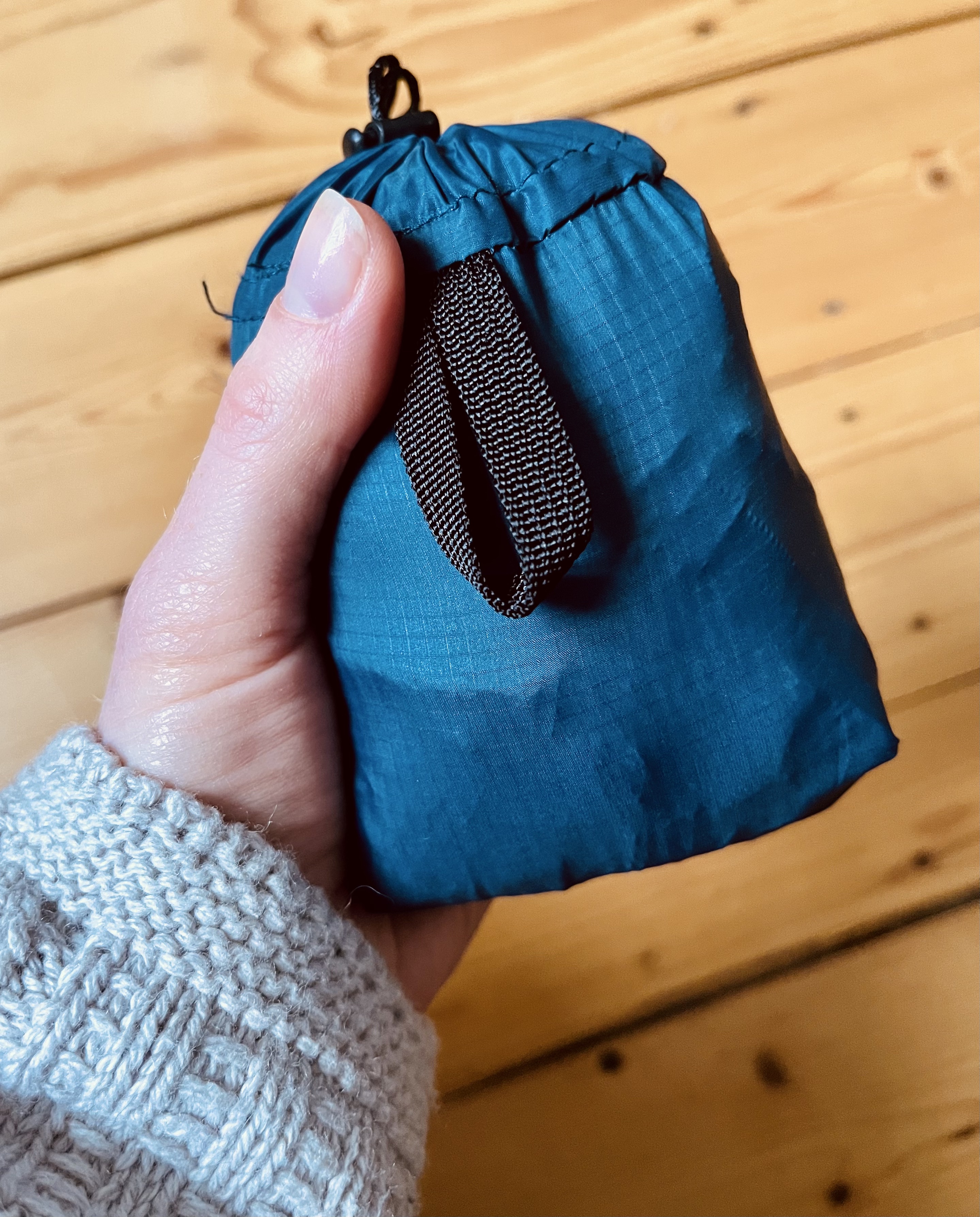
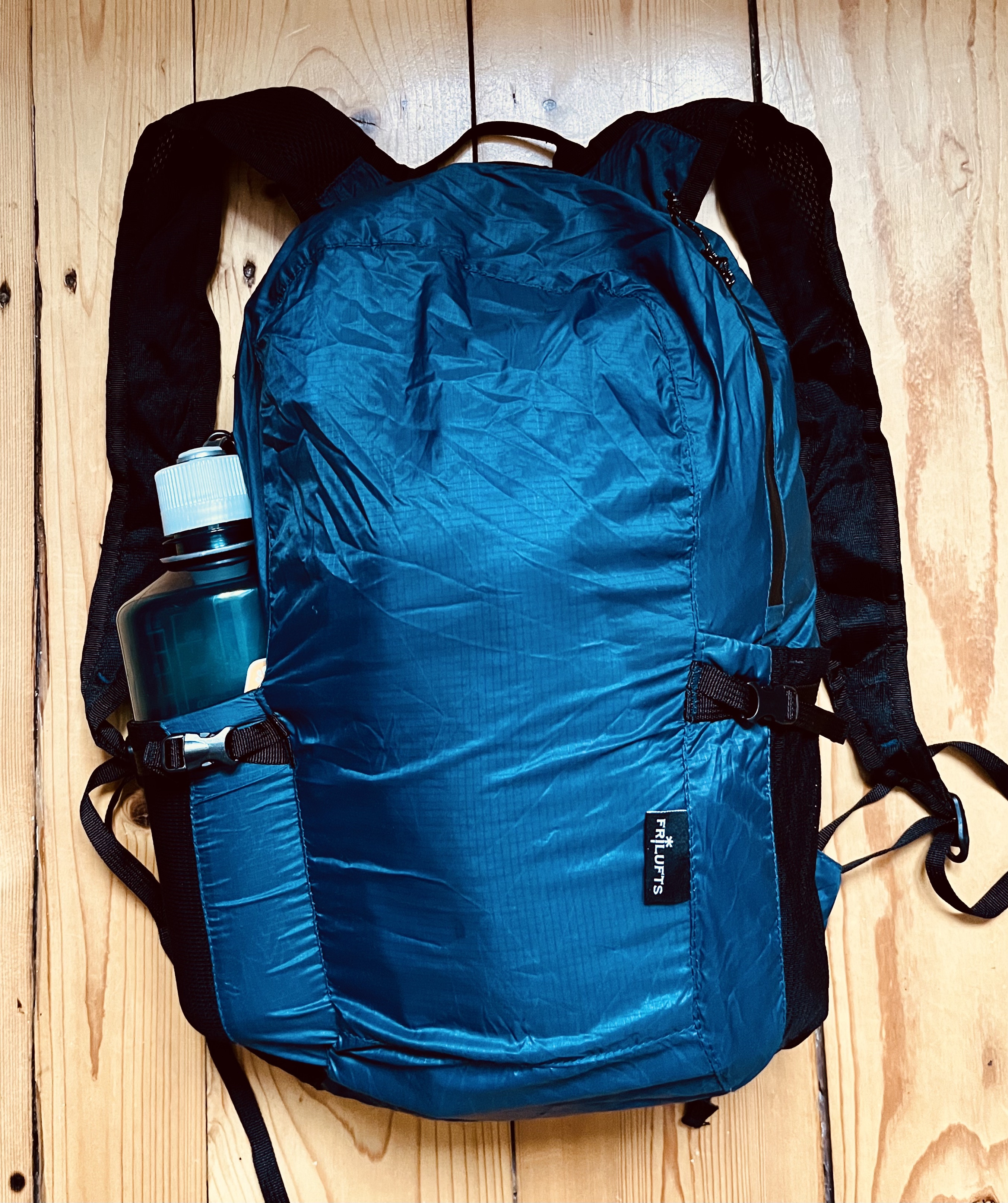
Alright, that was my rundown of the main gear to bring on the Alpe Adria trail - or any other long-distance hiking trail. Also, check out my complete packing list for the Alpe Adria trail as well as these detailed guides on:
- Toiletries to take on a thru-hike
- Food and drink equipment for a long-distance trail
- Which clothes to pack for a thru-hike
- A well-stocked, high-quality first aid kit on your thru-hike
Or start planning your own adventure with my 2-week itinerary for the most beautiful stages of the Alpe Adria Trail in Austrian and Slovenia.

